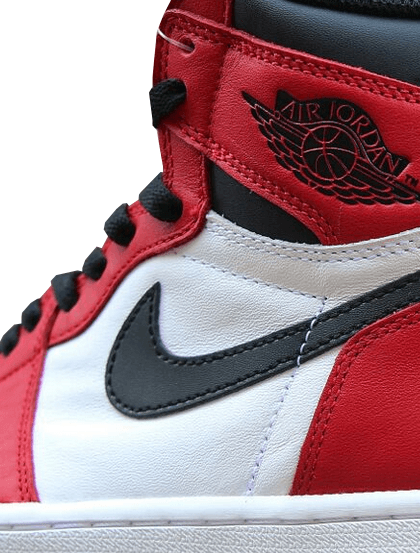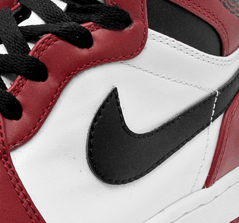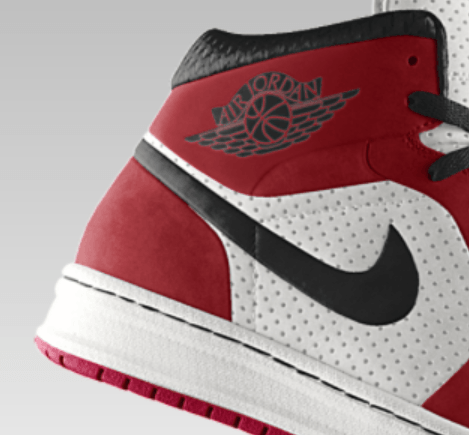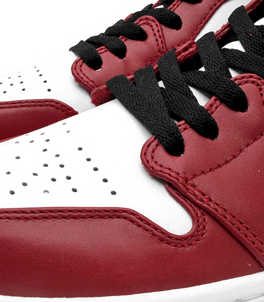Nike Air Jordan 1 Design Review: Shoe Edges
Shoe Construction Review: Material Edges
No doubt Nike makes great shoes, but today we are going to take a critical look at the Nike Air Jordan 1. Rather than review the styling from “Sneaker Freak” perspective or the performance of the shoe for actually playing basketball, I want to do comparison of the construction, materials and assembly the Original Air Jordan 1, the Retro Air Jordan 1 and the Nike ID Air Jordan 1.
A lot has been written about the Air Jordan 1, but I’m looking at a specific detail. The edges!
How the shoe designer handles the material edges is critical to the look, costing and construction of a shoe design. Today we are looking at 3 different versions of the same Classic Nike Air Jordan 1. Each model of this shoe the Original Air Jordan 1, the Retro Air Jordan 1 and the Nike ID Air Jordan 1, all have a different edge treatments. These three version of the Nike Air Jordan 1 each show the common material edge treatments raw cut, rolled or turned out seam.
Raw Cut or Die Cut edges:

The most common way to treat a material edge is to do nothing, just cut it. For real leathers and PU synthetic leathers a clean-cut is usually okay. If the material backing is color matched to the skin and the backing material is not rough or fibrous a clean-cut edge is perfectly acceptable for high-end performance or fashion shoes. In fact an exposed contrast color edge can be a neat design element. The down side is the raw edge is more susceptible to wear or fraying and may show wear sooner. The die cut edge may also be painted or sprayed to cover a backing material not dyed through.
This original air Jordan 1 is made from PU coated “action” leather. The edges are die cut clean. You can see the skin edge is perfectly clean as this is PU material, the backing edge does show shoe fibers from the leather.
In this Nike shoe you can see the White and Red materials are leather based while the Black Swoosh looks to be 100% synthetic material, as the edge is cut perfectly clean.
The raw, die cut edge is the least expensive way to handle the material edges. Mesh or Fabric edges can not be die cut.
Rolled Material Edges:
For a more finished looking treatment the material edges can be rolled. Fabric, Leather and PU material edges can be rolled. Extra labor is required and great care must be taken to insure the process results is a neat and clean edge. Not all shoe parts can be rolled neatly.

In the case of this Nike Air Jordan 1 Retro edition you can see almost all the material edges are rolled. This is very well done, the curving eyestay parts with tight corners are neat and even without bumps or wrinkles. This fine work is done with the aid of a machine.
To get clean edges like this Air Jordan you need two operations. First, the material edge must be skived to reduce the thickness. This leather maybe 1.2mm to 1.5mm – the skived edge, maybe 5mm wide will be .5 to .7mm thick. This will allow the edge to be rolled without making a huge fat edge. Once the material is skived down the cut parts will be taken to an edge rolling machine.
The Tuned edge or Turned seam:
The last shoe is the Nike ID Air Jordan 1. This model is made with different materials and uses different techniques. Made of synthetic panels this shoes is entirely “turned out”.
The shoe parts are cut, laid down face to face then stitched. The resulting seam is then hammered flat to remove wrinkles.
The turned seam may also require skiving, depending on the material thickness. This Nike shoe has some many turned out seams I expect the are not all skived.
This shoe is so neatly made you would think some parts may be welded on. Like the logo

Over all when you design a shoe you need to consider how to handle the edges, What materials will require special finishing, skiving, glueing or hammering?
Leather parts can be die cut, fabric parts can not. Synthetic material cut clean but may not handle the skiving operations.
Rolled seams and turn out seams can make crisp pattern lines line a die cut pattern part. Rolled and turned seams require more equipment, time and labor making them more expensive. You will have to find the technique suits for design, material and price.

